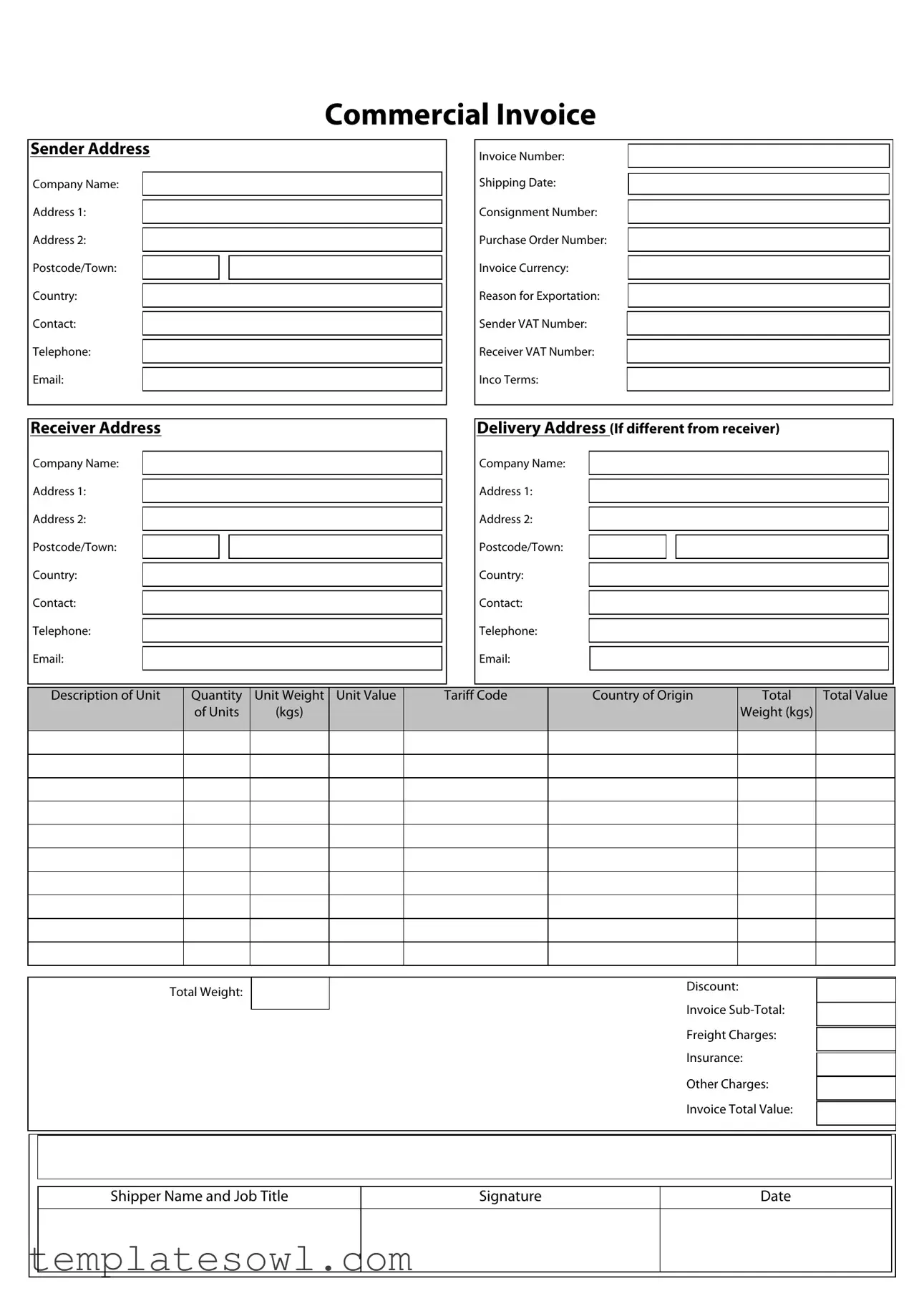The Commercial Invoice form serves as a crucial document in international trade, outlining the transaction details between the sender and receiver of goods. This form typically includes important information regarding both parties, such as their names, addresses, and contact details, ensuring effective communication and logistics. Key identifiers like the invoice number, shipping date, and purchase order number help track the transaction throughout the shipping process. Additionally, the form contains financial specifics, such as unit prices, total value, and any applicable discounts or charges, providing transparency in the financial exchange. The sender's and receiver's VAT numbers are also needed for tax purposes, while Inco terms clarify the responsibilities of each party in terms of shipping and delivery. It is important to accurately describe each unit, indicating quantity, weight, and origin, as this information can influence customs processes. Lastly, both a signature and date are required to validate the document, which can expedite the clearance process through customs. Understanding the structure and components of a Commercial Invoice can help streamline international shipping and ensure compliance with regulatory requirements.

